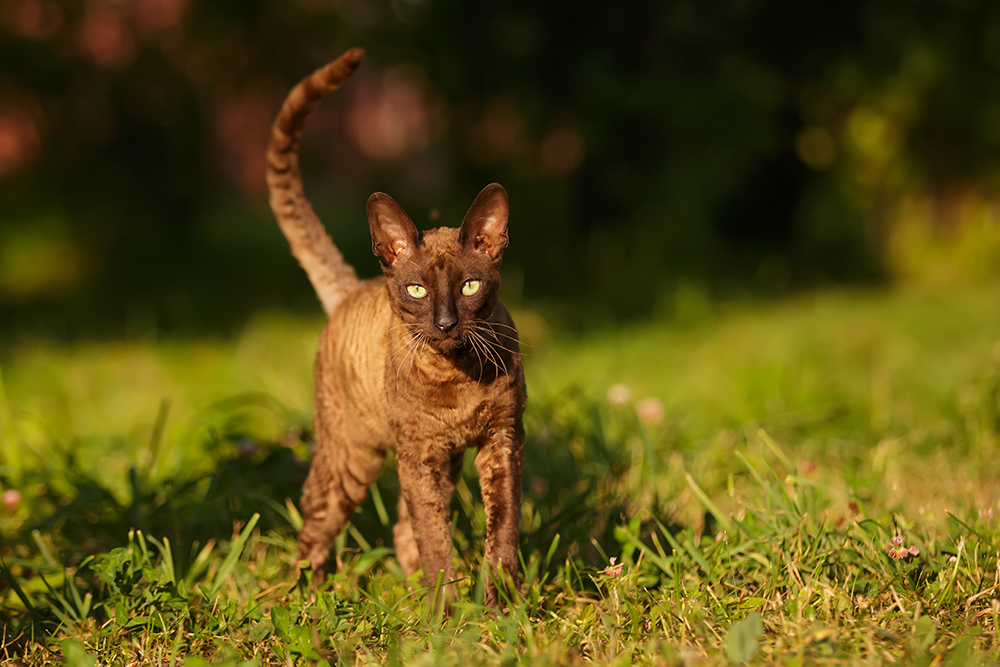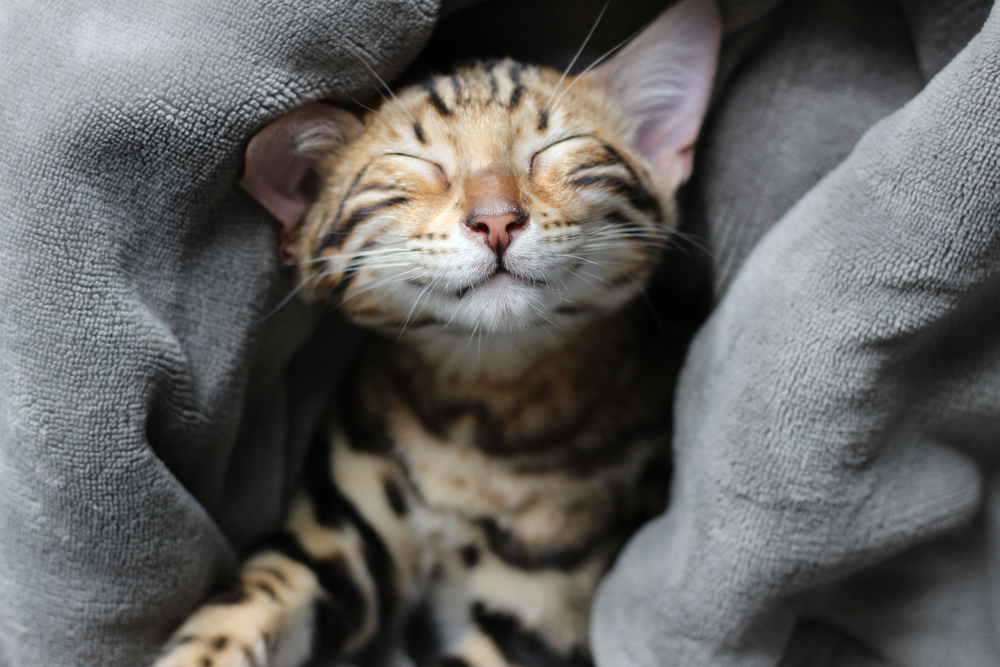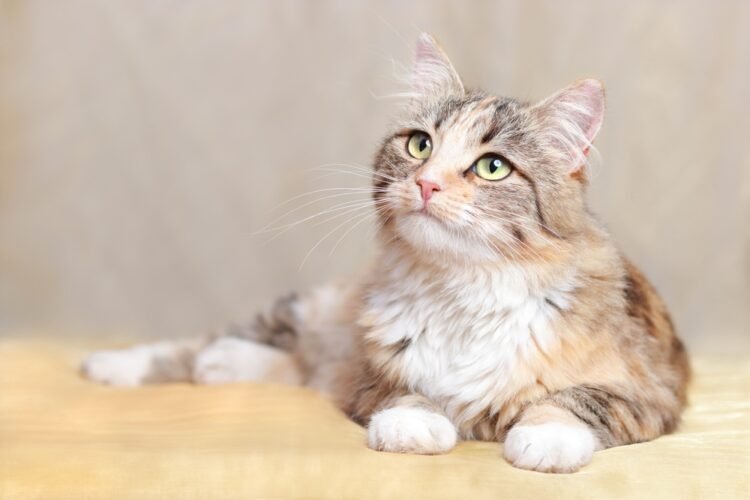[ad_1]
For those who ask any pet proprietor, they’ll emphatically say that their cats have emotions. They are saying their cats have expressed love and affection, and may even acknowledge and reply to how their caregivers are feeling. And it seems that they’re proper about their feline companions!
Analysis helps the speculation that our cats expertise the six primary feelings of shock, worry, disgust, disappointment, happiness, and anger. These are all of the feelings we’d anticipate to see in a 2 ½-year-old little one. There’s at the moment an absence of scientific proof that cats are able to extra complicated secondary feelings, similar to compassion, disgrace, jealousy, and disappointment. Let’s study a bit extra about feline emotions and feelings slightly below.

Primary Cat Feelings and Physique Language
Let’s take into account how cats categorical their feelings. Visible communication is important for animals since it may possibly assist keep away from battle. It might probably sign what they’re feeling, if a territory is occupied, and readiness throughout courtship.
You possibly can inform lots about what your pet is feeling by observing and studying their physique language. For instance, a cat with their tail held excessive or in a query mark form is keen to work together. In the meantime, a feline swishing their tail forwards and backwards is signaling their irritation. Woe to the individual or animal who’s the explanation behind a puffed-up tail! That’s a feline that’s upset and will strike if provoked.
These postures are examples of the six primary feelings that pet house owners most likely see usually. Apparently, analysis has uncovered proof of heritability of some behavioral traits that talk to feelings. One research even recognized Angora and Turkish Van cats as essentially the most aggressive among the many breeds studied.1 Likewise, the scientists discovered sociability variations among the many breeds, with the British Shorthair being the least more likely to search human contact versus the outright friendliness of the Ragdoll.
Selective breeding undoubtedly performs a task since lovers would invariably select which traits to encourage. This research additionally discovered a excessive diploma of heritability of aggression and shyness amongst cats.
Feline feelings are even evident of their facial expressions. An bold crew of researchers studied these options in 50 cats over the course of a 12 months. The scientists recognized 276 totally different facial expressions which the cats used to speak with one another and reveal their feelings. These had been made up of a mixture of 26 distinctive facial actions.2 For comparability canine, that we could take into account extremely expressive, solely have round 27 facial actions, however we’re usually higher at deciphering them.

Inherited Conduct Versus Discovered Responses
In contrast to canine, cats are very a lot in contact with their wild facet. Domestication has solely altered 13 genes throughout our 12,000-odd years collectively. Surprisingly, our feline companions share 95.6% of their DNA with the tiger!3 We will conclude that a lot of our cats’ conduct and related feelings are realized responses. In any case, they’re clever animals, and so they even know if you’re speaking to them.
Vocalizations
One other inherited and realized type of communication exists by way of vocalizations. Science has documented 21 totally different vocalizations in our feline companions. That of itself lends credence to cats having emotions. They’ve lots to say with all these sounds. Analysis has proven the profound results of domestication on their repertoire in some surprising methods.
For instance, cats study and reply to their names even when somebody unfamiliar to them says it. Analysis has additionally proven our feline companions look to us when offered with an unfamiliar object for cues about how to reply to it. The animals modify their feelings accordingly. These findings recommend recognition of emotions and the flexibility to adapt to new conditions. Let’s take into account the way it impacts vocalizing.
Purring
Purring is without doubt one of the traditional feline vocalizations. Apparently, solely small cats purr, whereas most giant felines roar. The exceptions are the cheetah and cougar. A species can’t do each due to their various anatomies. Purring serves a number of functions for cats. Kittens, like human infants, are born helpless or altricial. They’re totally depending on their moms. Purring is a type of communication between them.
People are likewise hardwired to reply to cries. It’s crucial for our survival. Kittens can purr shortly after they’re born, supporting this position. Persons are equally aware of purring, even amongst non-cat house owners. It’s just like the child sound we hear. Kittens do it to get their mom’s consideration, so your pet may purr to get one thing from you, particularly meals or affection. This function is exclusive to domestication.
The trigger and impact is that your cat needs one thing and has found out what they need to do to get it. That comes from expertise and conditioning fortified with optimistic reinforcement. Your pet purrs, and also you obey.

Meowing
Meowing is the quintessential feline vocalization. Youngsters find out how cats make this sound early of their schooling. It looks like the sound and kitties are intertwined. Nonetheless, the reality tells a distinct story. Cats do meow, however it’s often communication between kittens and their moms. It’s not one thing you usually hear behind this life stage in feral or wild felines. Like purring, it’s one other product of domestication.
Our pets must be in contact with their emotions to categorical themselves. The style wherein they do it speaks to their intelligence. Nonetheless, it has labored. We reply to meowing like we do purring. Each time we reply, we reinforce its effectiveness. Couple this idea with the notion that felines can learn our feelings and react to us.
Emotional Recognition
The event of emotions has been lengthy within the making. Analysis reveals that cats bond strongly with their caregivers, not in contrast to canine and even kids. These findings are fascinating, given the stereotypical notion of felines being aloof and unattached. The proof speaks for itself, with title and emotion recognition. Separation nervousness is an excessive instance of the bond between cats and their house owners.
Compelling proof of our pets having emotions exists with analysis involving cat blinking and eye narrowing. Scientists know that felines use their eyes to speak with conspecifics. Feelings run each ends of the spectrum. One research discovered that these gestures had been related to optimistic feelings between individuals and cats. The researchers equated it to a feline smile.
You blink, and your cat responds in form. It’s a shared second between proprietor and pet that symbolizes the love for one another on a private degree. It doesn’t get any higher.

Closing Ideas
The proof is evident: Cats do have emotions. Our feline companions bond with us emotionally in relationships that reinforce and nurture these emotions. You might take a look at your kitty in a different way, figuring out what lies between their cat’s eyes. Nonetheless, their feelings will simply proceed to deliver us nearer collectively as time goes on.
Featured Picture Credit score: Mariia Romanyk, Shutterstock
[ad_2]
Chris Dinesen Rogers
2024-08-28 08:07:22
Source :https://www.catster.com/way of life/do-cats-have-feelings/

















